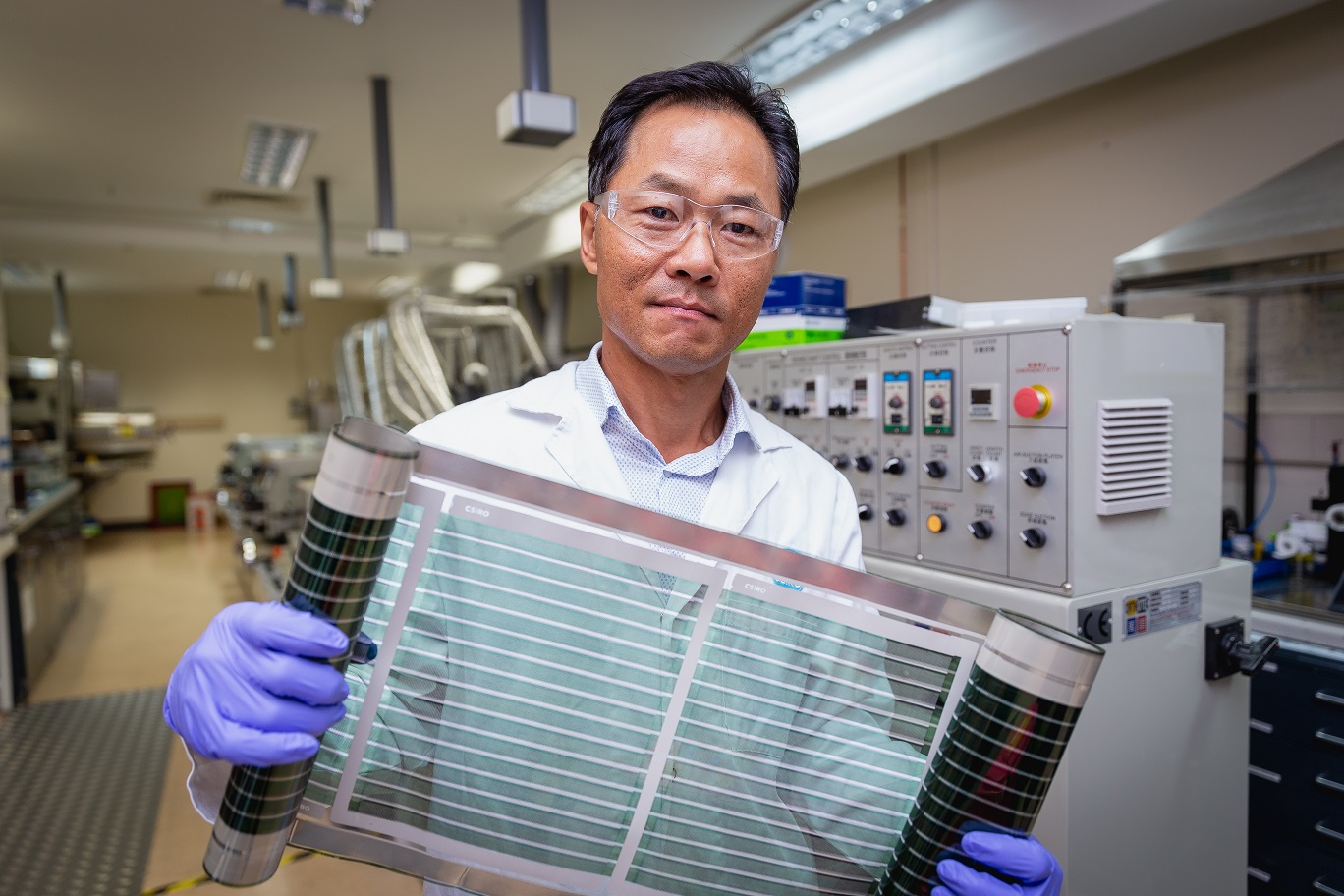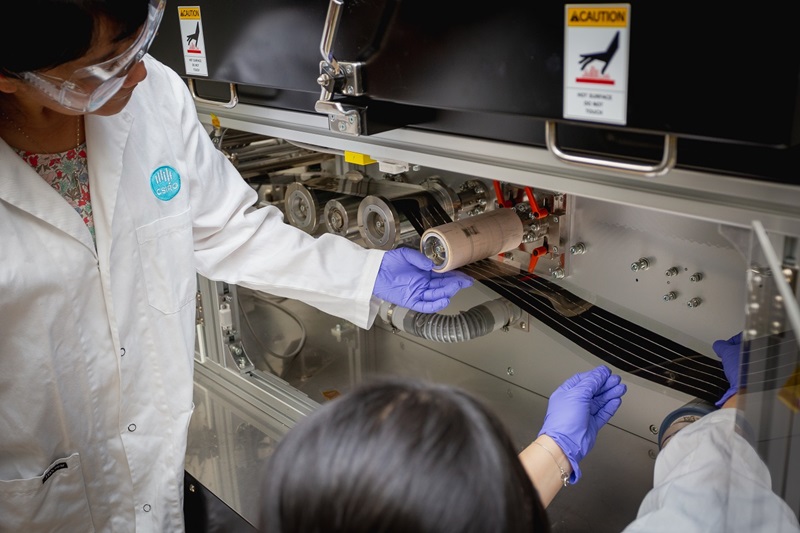
Dr Doojin Vak holds CSIRO-produced flexible solar cells. (Photo: CSIRO)
The Commonwealth Scientific and Industrial Research Organisation (CSIRO) of Australia, along with scientists from four top universities in the UK and Australia, have made a significant breakthrough in roll-to-roll printed solar cell research. Experts believe that if this technology is successfully commercialized, it could increase the efficiency of solar cells and accelerate to achieve global net-zero goals.
After more than a decade of research and development, the team demonstrated performances for solar cells of 15.5% efficiency on a small scale and 11% for a 50 cm2 large-scale module, which is a record for fully printed solar cells. Their findings have been published in the academic journal Nature Communications.
CSIRO said scaling up production while maintaining efficiency has long been a hurdle for printed solar cell technology, with many researchers achieving efficiency levels of 1% to 2%.
Dr. Doojin Vak, CSIRO’s principal research scientist, said they developed a system for rapidly producing and testing over ten thousand solar cells a day. “This allowed us to identify the optimal settings for the various parameters in the roll-to-roll process and quickly pinpoint the conditions that deliver the best results,” he said.

(Photo: CSIRO)
In contrast to traditional silicon solar panels which are rigid and heavy, these printed solar cells are made by printing ink with perovskite on to thin plastic films and offer remarkable flexibility and portability. “Perovskites are a class of emerging solar cell material,” Vak said.
The team also employs carbon-based inks to replace gold in the solar cell, leading to a significant reduction in production cost and expects to apply to defense, emergency management, agriculture, mining, and urban infrastructure. Furthermore, a collaboration with Australian space transportation provider Space Machines Company, facilitated a pioneering test in space, marking a significant step towards providing a reliable energy source for future space missions.
While it will take several years for this technology to be applied in the market, it has already attracted attention from experts in other fields. Particularly, Gabrielle Kuiper, an expert from the Institute for Energy Economics and Financial Analysis (IEEFA), highlighted on the social media platform LinkedIn that with the improvement of roll-to-roll solar cells, the role of distributed energy resource in the energy transition process should "not to be underestimated."


